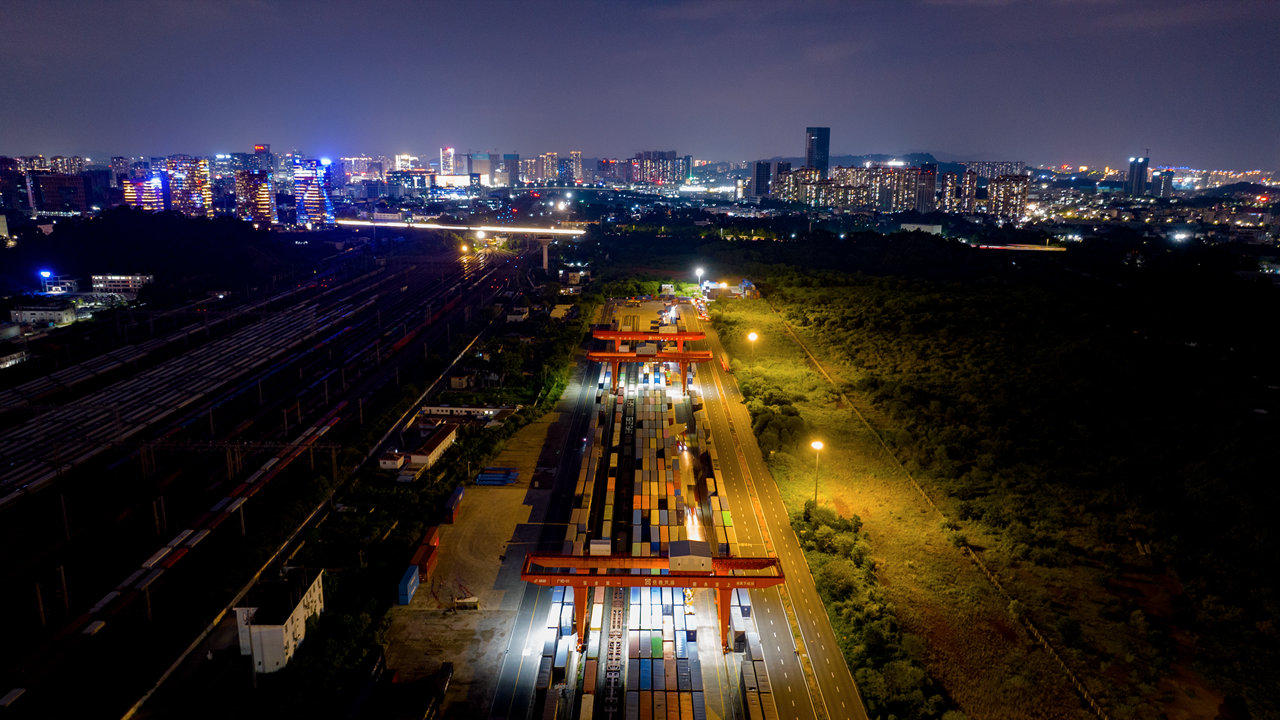Shenzhen Grepow Battery Co. Ltd., a lithium battery manufacturer in Longhua District, is busy manufacturing and preparing its exports as the Chinese New Year holiday is approaching.
Its batteries for drones account for 75% of the global market. According to Du Peng, the company’s vice manager, their exports increased by 30% in 2023. There has been a growing demand for drones in the international market as business recovers after the pandemic.

UAV batteries developed by Shenzhen Grepow Battery Co. Ltd. in Longhua District. File photo
On Monday, a chartered cargo ship for BYD new energy vehicles left the Xiaomo International Logistics Port, carrying 5,449 units, for Europe. In 2023, BYD sold over 3 million vehicles and became the world’s top electric vehicle maker in the fourth quarter.
Since last year, BYD has been ramping up the construction of its electric car plant in Thailand. The plant, located at the country’s Eastern Economic Corridor (EEC), is expected to be operational this year, has an annual production capacity of 150,000 electric cars, and can provide about 5,000 jobs.
According to Wang Chuanfu, chairman and president of BYD, 2023 was a milestone for the company as it marked the 20th anniversary of the establishment of the strategic partnership between China and the ASEAN, and 10th anniversary of BYD’s entry in the ASEAN market.
In July last year, Sunwoda, a world-leading battery manufacturer based in Shenzhen, announced it will invest 1.9 billion yuan (US$264 million) to build a lithium-ion battery factory in Hungary.
In October, BTR, another Shenzhen-based battery maker, partnered with Singaporean company Stellar, to set up a lithium-ion battery production base in Indonesia, providing 1,200 jobs for locals.
The facts echoed the staggering growth of Shenzhen’s “new three” exports last year. The city’s exports of the “new three,” namely lithium-ion batteries, solar cells, and new energy vehicles (NEVs), reached 88.76 billion yuan last year, up by 33.9% year on year.
Data showed that Shenzhen’s trade with Belt and Road countries and regions in 2023 rose by 9.3% year on year to 1.3 trillion yuan, accounting for 33.6% of the city’s foreign trade.
Hard links
Trade and investment, one of the many facets Shenzhen has in its participation in the BRI, has drawn BRI countries closer in many ways. For example, in the logistics sector, Shenzhen and BRI countries have been further linked through air, rail, and sea services.
On Jan. 4, the first Sino-Europe freight train of year 2024 departed from Pinghu South National Logistics Hub in Longgang District, carrying 47 million yuan worth of goods to Russia. The train arrived in Vorsino in 14 days with goods such as laptops and household appliances.
Statistics showed Shenzhen handled a total of 188 such trains in 2023, transporting 130,000 tons of cargo valued at 4.6 billion yuan.

The brightly lit Pinghu South National Logistics Hub in Longgang District in September last year. Shenzhen handled 188 China-Europe freight train trips throughout 2023, transporting 130,000 tons of goods worth a total of 4.6 billion yuan (US$642 million), according to the local customs. Liu Xudong
Over 4,000 enterprises from the Pearl River Delta area including 1,208 enterprises from Shenzhen has used the rail service since it was introduced in August 2020.
“We now operate two to three Sino-Europe trains a week, and we will add more international freight trains this year,” Kang Fuquan, deputy manager of the marketing department of Shenzhen National Railway Logistics Development Co. Ltd., said in an interview.
As an important node of the 21st Marine Silk Road, Shenzhen has enhanced its ties with ports around the world. So far, it has established friendly relationship with 26 ports around the world, including 13 ports in BRI countries.
By the end of 2023, Shenzhen had cumulatively opened a total of 211 shipping routes with BRI countries.
“In 2023, we added 18 sea routes and had the most intensive shipping routes from South China to the U.S. and E.U. Every day, we had about four ships to Europe and six ships to the U.S. On average, the routes covered many ports worldwide,” Pang Ning, deputy chief of the business department of Yantian International Containers Terminal Co. Ltd., said.
On the other hand, Shenzhen airport expanded its international cargo network to serve growing e-commerce demand.
In September, the Shenzhen airport opened a cargo route to Ashgabat, capital city of Turkmenistan, linking the city with Central Asian countries. The route is operated by Turkmenistan Airlines, the country’s national airline company, and mainly transports electronic products, clothing, and other specialties. At present, the Shenzhen airport operates 20 passenger routes and 16 cargo routes with BRI cities.
Soft links
Over the past 10 years, Shenzhen and BRI countries have utilized their respective advantages to build up a healthy, green, digital, and innovative “Silk Road,” from traditional fields like infrastructure construction to emerging industries like NEVs, digital economy, energy electronics, and green technology.
As of November 2023, Shenzhen enterprises have set up 1,189 enterprises and institutions in BRI countries with a cumulative investment of US$12.5 billion. In the past six years, BRI countries set up 3,228 enterprises in Shenzhen with an actual use of foreign capital amounting to 27.4 billion yuan. As of the end of November, the contracted value of projects of Shenzhen enterprises in BRI countries had reached US$171.8 billion.



